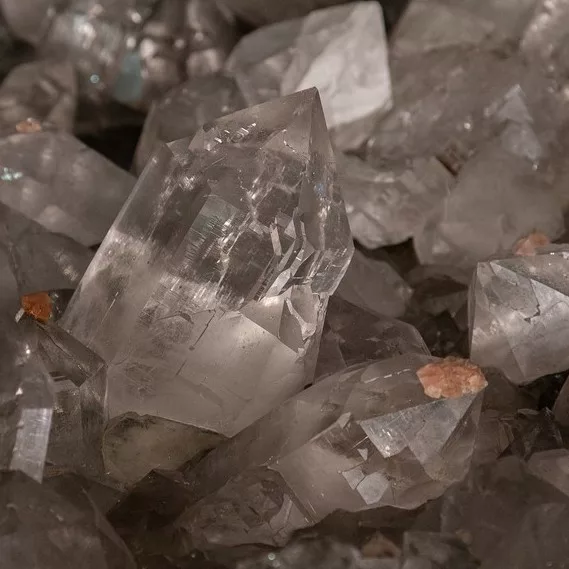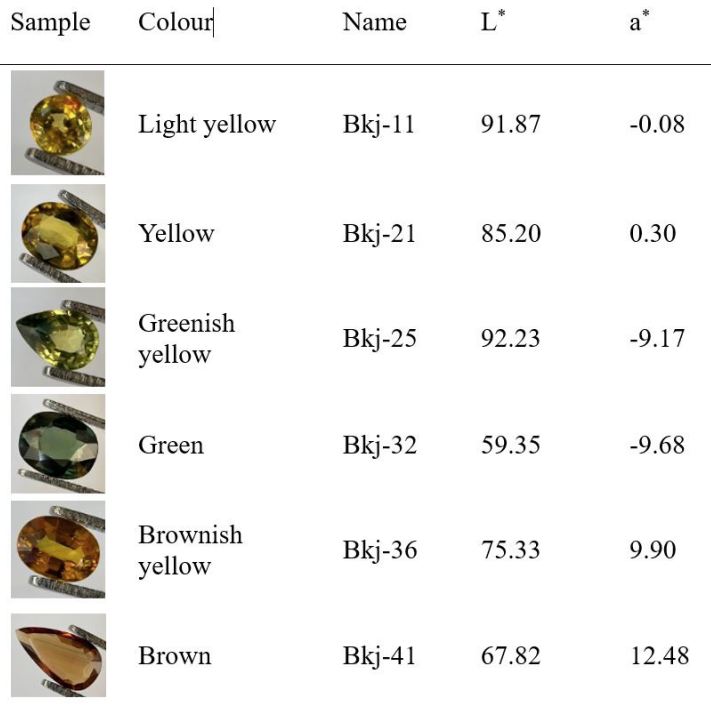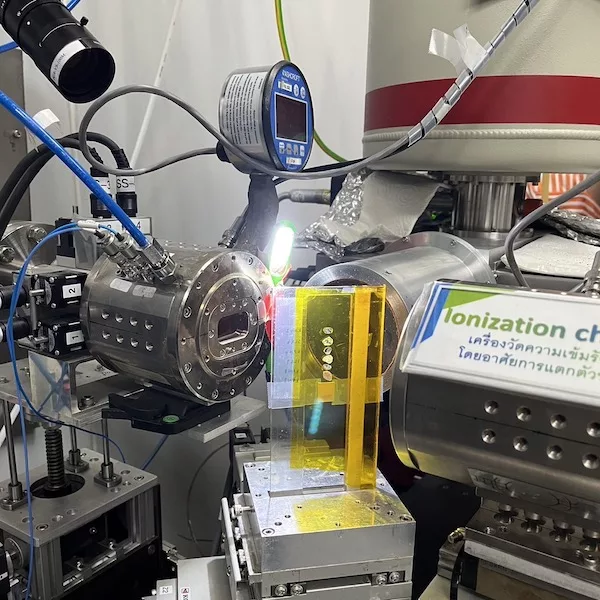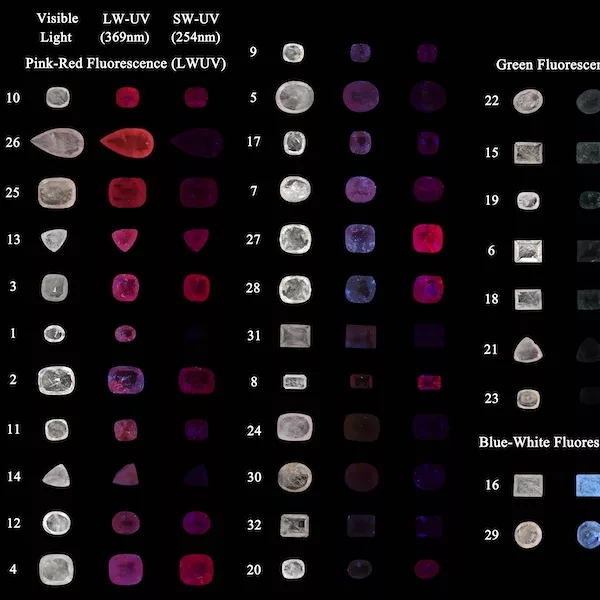Quartz crystals from alpine fissures: their formation and the historical significance of alpine quartz as raw material for objets d’art
Quarz in alpine fissures
The central Alps, especially the central granite massifs (Aar Massif, Gotthard Massif, Mont Blanc Massif) in Switzerland and adjacent France are known since ancient times for their rich deposits of mainly rock crystal and smoky quartz. The formation of quartz and other minerals took place in extensional fissures (clefts), which were formed by tectonic processes during the Alpine orogeny resulting from the collision of the African plate with the European plate. (Gnos et al. 2021). This orogeny caused regional stress, strain and faulting in rocks during the peak of Alpine metamorphism about 20 million years ago. Quartz crystal formation occurred in granitic rock units located at about 13 to 18 km depth at that time at pressures between 0.3 to 0.45 GPa and temperatures of 450 to 550 °C (Mullis 1996). The tectonic stress led to the formation of fissures in the rock (clefts), which could form caverns up to several meters in size depending on the lithologies. Especially the southern margin of the Aar Massif in Switzerland was strongly tectonically affected, and most important historical quartz discoveries in the Swiss Alps are restricted to this area. These caverns (large clefts) were filled by hydrothermal fluids of metamorphic origin, which due to their supercritical state were able to dissolve locally minerals (mainly quartz) from the surrounding rocks. Due to the mountain-building processes of the Alps, which are still ongoing today, the buried rock formations were slowly uplifted and by this experienced a continuous decrease in pressure and temperature. This led to a supersaturation of the dissolved substances in the hydrothermal solutions circulating in these fissures and to the crystallization of mainly quartz crystals (Fig. 1). This growth process lasted for about 5 to 7 million years until the temperature in the fissures dropped to about 200 °C and the growth of quartz stopped. The P-T ratios prevailing during formation as well as the chemistry of the hydrothermal solution in the fissures determined the habit of the quartz crystals, so that an approximate regional assignment of alpine quartz crystals is possible (Gnos et al. 2021).
Due to the low cooling rate of the rocks by the slow uplift of the Alps, the formation of alpine quartz crystals took much longer compared to the formation of quartz in pegmatites. The rate of cooling of pegmatite bodies was controlled primarily by the temperature difference from the adjacent rock into which the pegmatitic magma intruded. Calculations indicated that quartz and other typical pegmatite minerals could form large crystals in druses in pegmatites within a few days to weeks in extreme cases (Webber et al. 1999 and Phelps et al. 2020).
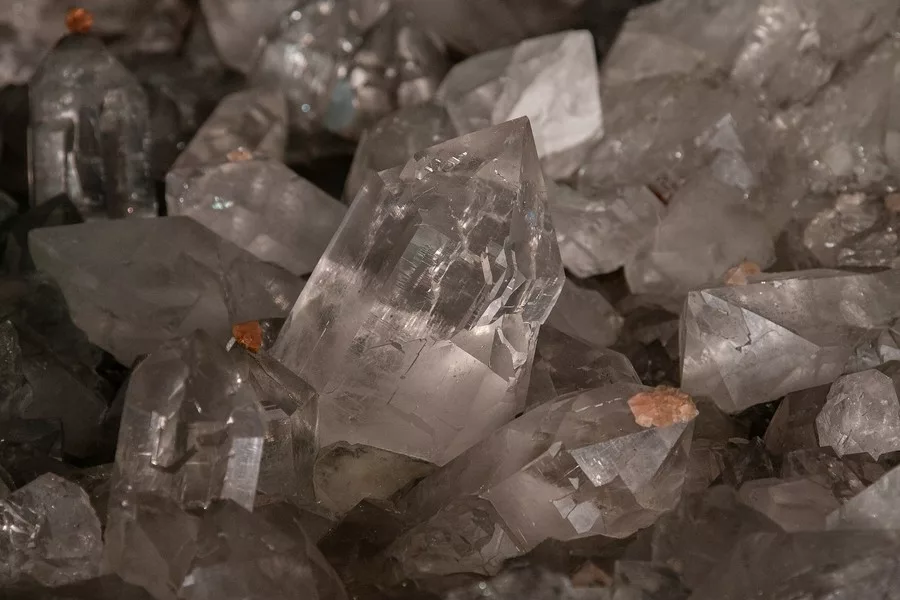
The importance of alpine quartz in history
Alpine quartz was already used in prehistoric times as cutting tools due to its hardness and sharp chipping. The Roman natural scientist Pliny the Elder (AD 23-79) reports that already in his time rock crystals were specifically searched for in the Alps. Since that time, but especially starting from the Middle Ages, alpine rock crystals and smoky quartz were primarily used as raw material for objets d’art with a religious context (e.g. monstrances, reliquaries) and for ornamental objects (Fig. 2). The latter served less as objects of daily use, but rather as symbol of status due to the limited availability of the raw material in sufficient quality and size, as well as the great craftsmanship and artistic effort required to carve such an objet d’art from quartz. Consequently, only mighty rulers could afford them because of their high value which was far above that of fine arts (e.g. paintings) (Distelberger 2002). The availability of sufficiently large quartz crystals with good purity for the production of objets d’art is very limited. In the European historic context, it depended very much on finds of large quartz crystals in very large hydrothermal clefts, as they occur primarily in the Aar Massif. Such large clefts with well-formed quartz crystals are found only every few decades to centuries. Historically, the trade of quartz crystals developed into an important economic activity of the mountain population in Switzerland. These quartz crystals were carried along several trade routes to the lapidary workshops, mainly in Milan and Venice (Italy), Prague (Czech Rep.) and in the area of the Upper Rhine, especially Freiburg (Southern Germany). In 1719, a large cavern with exceptional quartz crystals was found in the area of the Grimsel Pass (Aar Massif, Switzerland). This find is a good example to document the economic and cultural importance of this quartz trade in historic times in Europe. The cavern, forgotton for centuries after its excavation, was finally rediscovered only very recently in 2020 (Arlt and Bolliger 2020). With the development of natural sciences in modern times, quartz from alpine deposits became increasingly important as objects of scientific study and collection, while their use as raw material for works of art decreased. The presentation also includes the description of the latest discovery of a huge crystal cavern at Planggenstock in the Swiss Alps, which yields rock crystals weighing up to 300 kg as well as pink fluorite in very high (gem) quality. Due to the sufficient availability of material in cutting quality, the historical tradition of producing art works from Alpine quartz has been resumed by the well-known gemstone designers Bernd and Tom Munsteiner (Germany).
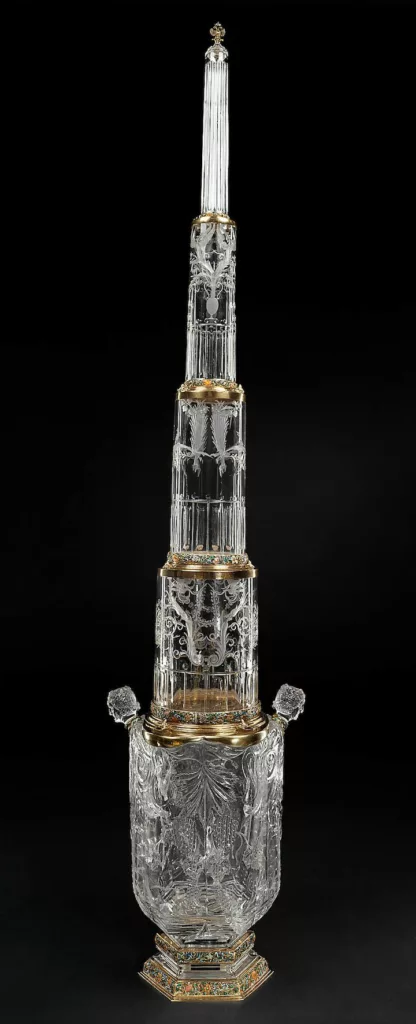
References:
- Arlt, T., und Bolliger, M., 2020: Die Kristallhöhle von 1719 am Zinggenstock. Mitt. Naturforsch. Ges. Bern NF, 77, pp. 70-89
- Distelberger, R. 2002: Die Kunst des Steinschnitts. Ausstellungskatalog des Kunsthistorischen Museums Wien. 365 pp.
- Gnos, E., Mullis, J., Ricchi, E. et al., 2021: Episodes of fissure formation in the Alps: connecting quartz fluid inclusion, fissure monazite age, and fissure orientation data. Swiss Jour. Geosciences, 114, 14. https://doi. org/10.1186/s00015-021-00391-9
- Mullis, J., 1996: P-T-t path of quartz formation in extensional veins of the Central Alps. Schweiz. Min. Petrogr. Mitt., 76, 159–164
- Phelps, P.R., Lee, CT.A. & Morton, D.M, 2020: Episodes of fast crystal growth in pegmatites. Nature Commun., 11, 4986. https://doi.org/10.1038/s41467-020-18806-w
- Webber, K.L., Simmons, Wm B., Falster, A.U., Foord, E.E, 1999: Cooling rates and crystallization dynamics of shallow level pegmatite-aplite dikes, San Diego County, California. American Mineralogist, 84, 708 – 717

